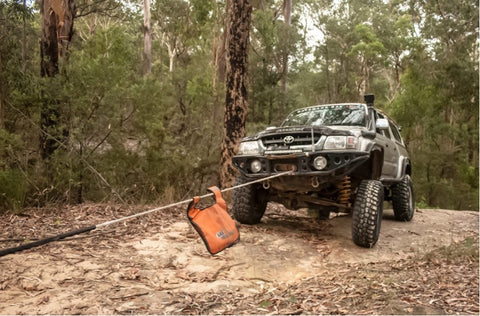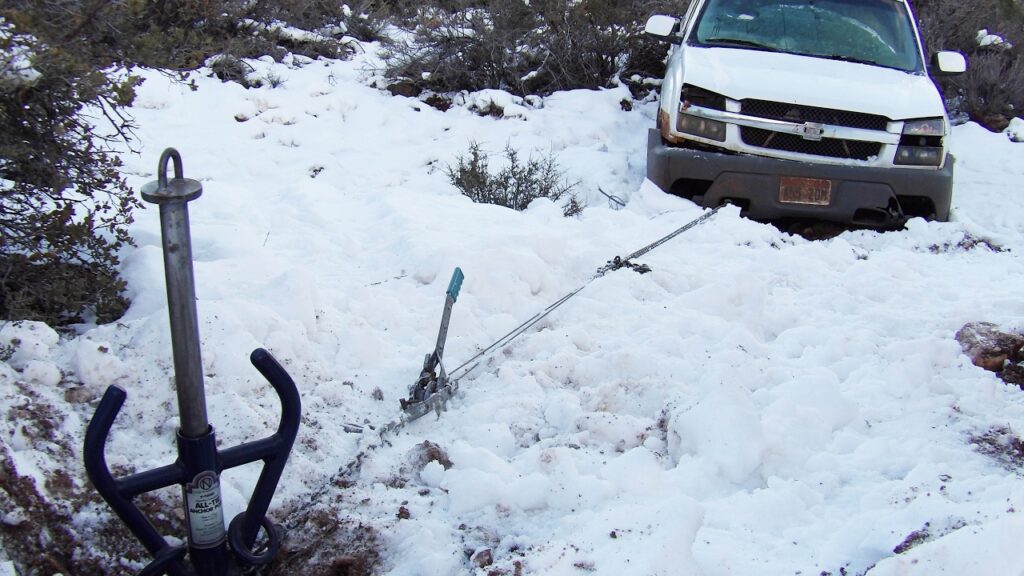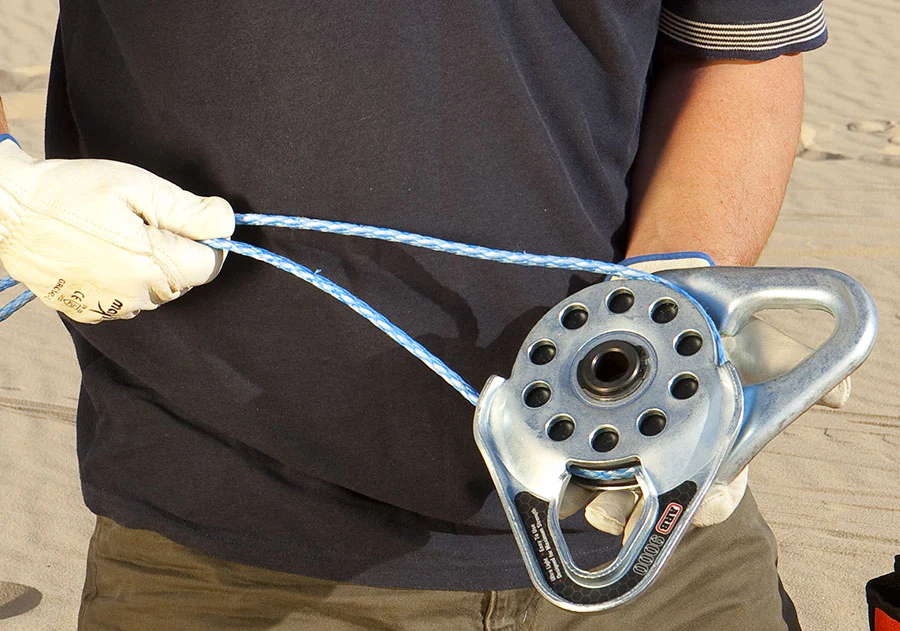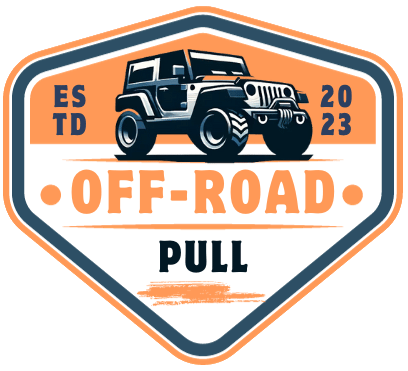Have you ever found yourself stuck in deep mud, sand, or on a steep incline with no way out?
If you’re an off-road enthusiast like me, you know that these situations are all too common.
This is where a snatch block comes into play. In this guide, we’ll walk you through everything you need to know about how to use a snatch block effectively.
Quick Summary
Selecting an Anchor Point:
- Strong and Stable: Use trees (with tree saver straps), large rocks, or other vehicles.
- Proper Positioning: Ensure a straight or controlled angled cable run.
Inserting the Cable:
- Open Side Plates: Remove pin/bolt, swing open plates.
- Insert Cable: Place cable over the sheave.
- Secure: Reinsert pin/bolt, ensure everything is tight.
Securing to the Anchor:
- Use a Shackle: Attach snatch block to anchor point with a shackle.
- Check Stability: Ensure setup can handle the load.
Double-Line Pull Technique:
- Setup: Secure snatch block to anchor, run cable through, and back to vehicle.
- Attach to Recovery Point: Secure cable to tow hooks or recovery points.
- Double Winch Power: Distributes load, effectively doubling winch capacity.
When to Use a Snatch Block
Snatch blocks are incredibly versatile and can be used in several scenarios:
- Stuck in Deep Mud or Sand: If your vehicle is deeply bogged down, a snatch block can help increase your winch’s pulling power.
- Steep Inclines or Heavy Loads: When facing a steep hill or pulling a heavy load, a snatch block can make the job easier.
- Redirecting Winch Cable for Better Angles: Sometimes, the best way out isn’t a straight line. A snatch block allows you to change the direction of the pull for a better angle.
- Single-Line vs. Double-Line Pull Scenarios: Depending on the situation, you might use a single-line pull for lighter tasks or a double-line pull to double your winch’s power.
How to Use a Snatch Block: Setting Up Your Snatch Block
Setting up a snatch block is crucial for a safe and effective vehicle recovery. Here’s a detailed step-by-step guide to ensure you do it right:
Safety First

Wear Gloves: Always wear heavy-duty gloves to protect your hands from sharp edges on the cable and prevent rope burns.
Use a Winch Damper: Place a winch damper over the cable to minimize the risk of injury if the cable snaps.
The damper will absorb some of the energy and reduce the cable’s recoil.
Clear the Area: Make sure the area around the recovery site is clear of bystanders and unnecessary equipment. This reduces the risk of injury to others.
Selecting an Anchor Point

Strong and Stable: Your anchor point must be strong and stable enough to handle the load. Ideal anchor points include:
- Trees: Use a tree saver strap to protect the tree and provide a secure anchor.
- Rocks: Large, immovable rocks can serve as anchor points.
- Other Vehicles: In some cases, another vehicle can act as an anchor point.
Proper Positioning: The anchor point should be positioned in a way that allows the cable to run in a straight line or at a controlled angle to your vehicle.
Opening the Snatch Block and Inserting the Cable

Open the Side Plates: Most snatch blocks have a pin or bolt that you need to remove to open the side plates.
Once the pin is out, the plates should swing open.
Insert the Cable: Place the winch cable over the sheave (the wheel in the snatch block).
Ensure the cable is properly seated in the groove of the sheave.
Close and Secure: Swing the side plates back into position and reinsert the pin or bolt to lock the snatch block securely.
Double-check that everything is tightly closed and the cable is correctly positioned.
Securing the Snatch Block to the Anchor
Use a Shackle: To attach the snatch block to your anchor point, use a D-ring shackle or bow shackle.
These are designed to handle high loads and are essential for secure attachment.
Proper Attachment: Connect the shackle to the tree saver strap, rock, or vehicle recovery point.
Make sure the shackle pin is fully tightened but not over-tightened to avoid damaging the threads.
Check Stability: Ensure that the snatch block and anchor point are stable and can handle the expected load.
A loose or unstable setup can lead to dangerous situations.
Double-Line Pull Technique

The double-line pull technique is a powerful method to enhance your winch’s capabilities. Here’s how to set it up:
Running Cable Back to Your Vehicle
Initial Setup: Start by securing the snatch block to your anchor point as described above.
Run the Cable: Once the snatch block is in place, pull the winch cable through the snatch block and run it back towards your vehicle.
Attaching to Recovery Point or Tow Hooks
Strong Connection: Find a strong recovery point on your vehicle, such as tow hooks or a dedicated recovery point.
These are typically reinforced areas designed to handle high loads.
Secure the Cable: Attach the end of the winch cable to the recovery point using a hook or another shackle.
Ensure the connection is tight and secure.
How it Doubles Your Winch’s Power
Load Distribution: In a double-line pull setup, the load is distributed between two lines of cable, effectively halving the load on each line.
This means your winch can handle double the weight it normally would.
Increased Capacity: For example, if you have a winch with a capacity of 9,000 lbs, a double-line pull can increase its effective pulling power to 18,000 lbs.
This makes it much easier to recover a heavily stuck vehicle.
Changing Pull Direction with a Snatch Block
Sometimes, you need to change the direction of the pull:
Why Angle Matters in Recovery:
The angle of pull can reduce the load on your winch and make recovery easier.
Setting Up for a Side Pull: Position the snatch block to direct the cable to the side.
Using Multiple Snatch Blocks for Complex Angles: In some cases, using more than one snatch block can help you navigate around obstacles.
Avoiding Cable Friction Against Obstacles: Ensure the cable runs smoothly without rubbing against rocks or other obstacles that could damage it.
Snatch Block Safety Tips
Safety should always be your top priority:
Inspect Equipment Before Use: Check your snatch block and all related gear for damage before using them.
Never Use a Damaged Snatch Block: If any part of the snatch block is damaged, don’t use it.
Keep Hands Clear During Operation: Always keep your hands away from the cable and snatch block while winching.
Stand Away from Cable and Block: Stay clear of the winch cable and snatch block during operation to avoid injury if something goes wrong.
Additional Recovery Gear to Pair with Snatch Blocks
Pair your snatch block with these additional recovery tools for a more effective setup:
Tree Saver Straps: Protect trees while providing a strong anchor point.
Shackles and Links: Secure your snatch block and other gear.
Recovery Boards: Provide traction in slippery or sandy conditions.
Hi-Lift Jack for Anchoring: Use as a portable anchor point when natural anchors are not available.
FAQs
Can I use a snatch block with a synthetic winch line?
Yes, snatch blocks can be used with both synthetic and steel winch lines. Just ensure the snatch block is compatible with the type of line you’re using.
How do I know my snatch block’s weight capacity?
Check the manufacturer’s specifications for the Working Load Limit (WLL) and breaking strength.
Can I make a snatch block setup without a winch?
Yes, you can use a snatch block with a come-along or other manual pulling devices, but a winch makes the process much easier.
Is a snatch block the same as a pulley block?
While similar, a snatch block typically has a removable side plate for easy cable insertion, whereas a pulley block may not.
How many snatch blocks can I use in one setup
You can use multiple snatch blocks to create complex recovery setups, but ensure all components are rated for the load.
Conclusion
A snatch block is an essential tool for any off-road enthusiast. It increases your winch’s power, helps you change the direction of your pull, and makes vehicle recovery safer and more efficient.
By understanding how to use it properly and pairing it with the right gear, you can tackle almost any recovery scenario with confidence.

